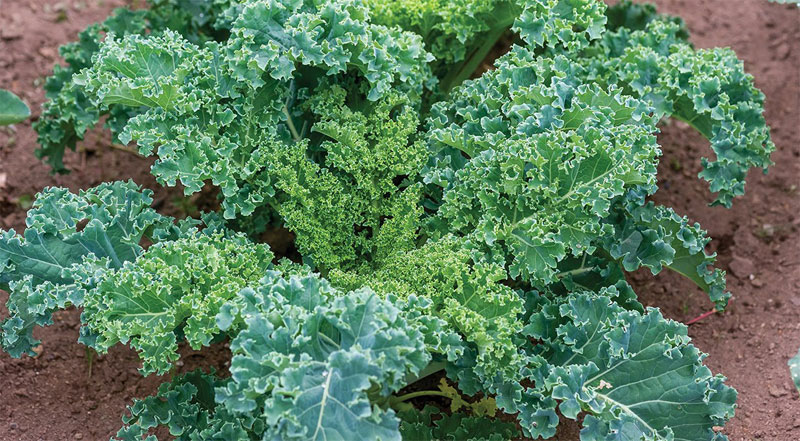How to grow kale – Kale is a vegetable full of good nutrients grown in the yard. Kale is rich in iron, calcium, vitamin K, vitamin A, and Vitamin C. In addition, it is a plant that is rich in fiber and good for digestive health.
Planting kale is very easy even if you are not a garden expert. By planting four plants or five you can meet the weekly needs of your family. If you don’t have a yard, you can plant kale in containers or in pots.
If you choose a container as a place, at least the container has a diameter of 12 inches and uses a planting medium that is easy to dry and does not make the water stagnant.
In this article, we will explain how to plant your own kale from home. You can plant anywhere, either in containers or plant directly on the ground.
Starting with Seeds
A good place to plant kale is an area with cold temperatures. Indeed, in a warm-weather place can grow but the taste will be slightly bitter.
So, plant kale seeds in the room about 6 months before the end of winter. This plant will experience a harvest period before the arrival of summer.
Also read: How to Grow Peas – Let See 11 Steps in Growing Peas
The seeding process will ripen immediately in 55 to 75 days. Then immediately proceed with a transplant and the harvest period will arrive around 30 to 40 days.
After harvest, plant again in the fall season. Maybe around 8 weeks before the first snowfall. To be able to get a sustainable harvest, you can plant kale every two or three weeks. With this system, you harvest kale gradually and continuously.
How to Grow Kale
If you choose to plant kale in winter, your plants must get plenty of sunlight. However, if you plant in the warm season, you should choose a place that is rather shady.
Kale plants are well planted alongside beets, cucumbers, herbs, red onions, spinach, celery, potatoes, and shard. Not good if planting side by side with beans, tomatoes or near strawberries.
To keep kale’s growth healthy, always control the soil to keep it moist. Compost every six or eight weeks.
Keep soil moist to encourage consistent growth. Dress your soil with compost every six to eight weeks. You can use seaweed emulsions like Neptune’s Harvest Hydrolized Fish and Seaweed Fertilizer. This will stimulate better plant growth.
How to Care For
When the age of the kale plant is young, you have to make plastic protection such as “Agfabric Floating Row Cover”. It aims to keep plants from fleas or insects.
In addition, Agfabric Floating Row Cover is also useful for maintaining when the weather changes suddenly. Another treatment is to remove leaves that look unhealthy and provide compost and keep the soil moist.
Also read: Double Tree of Casorzo – A Tree Growing Atop Another Tree
The root growth of the kale plant propagates horizontally so it is important to keep the roots moist. One way you can do this is to give organic mulch from straw. Giving this straw will keep the soil moisture around the stem and good to prevent the appearance of weeds.
When you enter the summer, you can harvest the beans. When harvesting, pull out the kale and its roots. You can prepare the land to plant summer vegetables.
When to Harvest Kale
When entering summer, if you plant it in winter or when kale leaves are as big as your hand. Select leaves one by one from the stem, starting from the lowest leaf (close to the ground) until the leaves grow on the center of the stem.
Don’t pick up all of your kale leaves, leave a few small leaves on the end of the plant to stimulate the growth of new leaves.
Also see: How to Germinate Seeds Quickly
Kale plants that you have harvested, you can harvest again a week later. So, if the change is good, you can harvest kale every week.
Source:
https://www.canr.msu.edu/resources/how_to_grow_kale_and_collards
https://cals.arizona.edu/yavapai/anr/hort/byg/archive/growingkale.html
